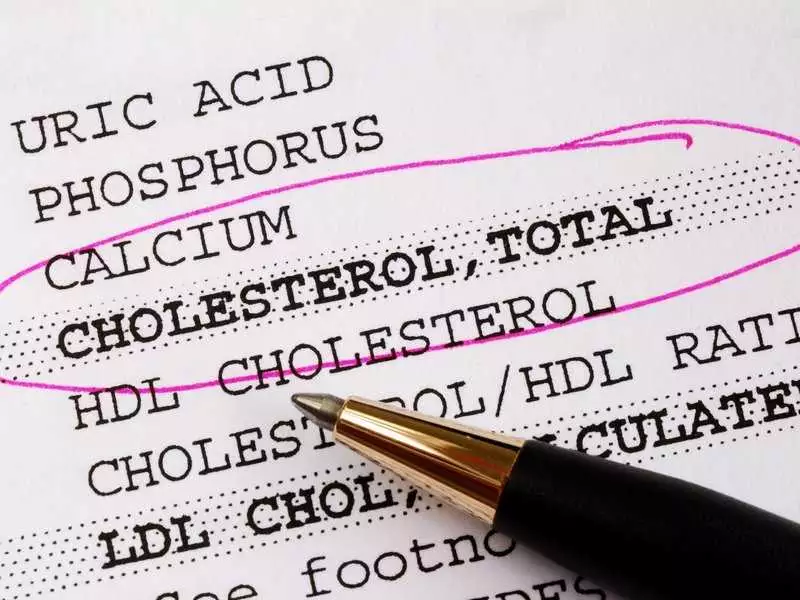Cardiovascular diseases are responsible for approximately 4 million deaths in the population worldwide. The magnitude of the risk is therefore the basis for taking action towards appropriate prevention and prophylaxis. It is necessary to determine the risk of lipid disorders in order to make the necessary changes to one's lifestyle accordingly. To this end, basic blood cholesterol tests are carried out. Attention is drawn to the importance of physical activity and daily diet as the elements most relevant to the prevention of lipid disorders.
Cardiovascular disease is responsible for the deaths of more than 4 million people worldwide, with a higher mortality rate among women, although many more men die ofcardiovascular disease before the age of 65. From this perspective, prevention, understood as a set of coordinated population-based measures to reduce mortality, as well as the incidence of cardiovascular disease and its consequences and complications, in the form of disability, is extremely important.
Laboratory tests
To determine lipid disorders in the body, laboratory tests are ordered from a blood sample.
Total cholesterol (TC) is mainly used to estimate the risk of cardiovascular disease associated with lipid disorders in the body. However, it is an insufficient parameter due to the fact that it can be misleading in individual cases. This issue mainly affects women and people with diabetes. It is therefore necessary to perform other tests in addition to TC.
Another of the parameters tested is low-density fraction cholesterol (LDL-C). Given the variety of testing methods, it is important to be aware that a specific concentration result may also not be authoritative, particularly in people with hypertriglyceridaemia.
In this situation, another parameter should be considered, namely cholesterol of a fraction other than high-density lipoprotein (non-HDL-C). It provides information on the total amount of atherogenic lipoproteins. Risk assessment studies, using the non-HDL-C parameter, indicate that in most cases, it is clinically relevant, hence, although the main parameter for determining cardiovascular disease risk is the LDL-C index, it is recommended that the non-HDL-C index be tested in parallel.
High-density lipoprotein fraction cholesterol (HDL-C), on the other hand, is a strong indicator of risk factors. Its low level, has been identified as an indicator of a high risk of cardiovascular disease resulting from lipid disorders. On the other hand, it has not been confirmed that high levels of HDL-C are a guarantee against the occurrence of such diseases.
Triglycerides (TG) are also a parameter that is a strong determinant of risk factors. High TG concentrations are associated with low HDL-C concentrations, giving a clear picture of disorders in many cases. Furthermore, in some cases, in addition to testing fasting TG levels, non-fasting TG levels are also ordered to provide additional information on lipoproteins associated with high risk.
In addition, parameters such as apolipoproteins and lipoprotein α, which are independent additional indicators of risk factors, are also determined for better interpretation and greater specificity.
Fasting or not?
The traditional model assumes that blood sampling for lipid disorders should take place on an empty stomach. Studies comparing the results of patients who had their blood drawn on an empty stomach and those who had their blood drawn after a meal showed that there was little difference in the levels determined. Thus, it can be said that both fasting and non-fasting tests, in the context of detecting lipid abnormalities in the body, may be equally relevant and of equal clinical value.

photo: panthermedia
Lifestyle changes
If test results indicate a high risk of cardiovascular disorders or clearly indicate the presence of cardiovascular disorders, it becomes necessary to make lifestyle modifications.
It is not without reason that the great importance of daily diet, in lowering the dangerous parameters affecting the lipid profile picture, is emphasised. Studies on the impact of diet on the development and prevention of lipid disorders have been undertaken on numerous occasions, which clearly show that an adequate diet not only improves the lipid profile in test results, but also affects traditional risk factors such as plasma lipid concentrations, blood pressure or blood glucose levels.
It has also been shown that the factor that has by far the greatest impact on blood cholesterol levels is fatty acids. Among the most dangerous fats consumed in food are trans fats, which are hydrogenated acids of industrial origin, and their consumption reaches up to 6.5% of the total energy value of the food, depending on the population. Trans fats have the effect of significantly raising blood LDL-C levels, thereby reducing HDL-C levels.
When polyunsaturated omega-6 fatty acids were included in the diet, however, a decrease in blood LDL-C concentrations was observed. Hence, conclusions were drawn about the positive effect of saturated fatty acids on the lipid profile picture. Saturated fatty acids, from the Omega-3 group, also have an effect on our body's lipid metabolism, but they do not have an effect on lowering LDL-C levels, but on lowering TG levels. There is also a significant correlation between cholesterol intake and mortality due to cardiovascular disease.









